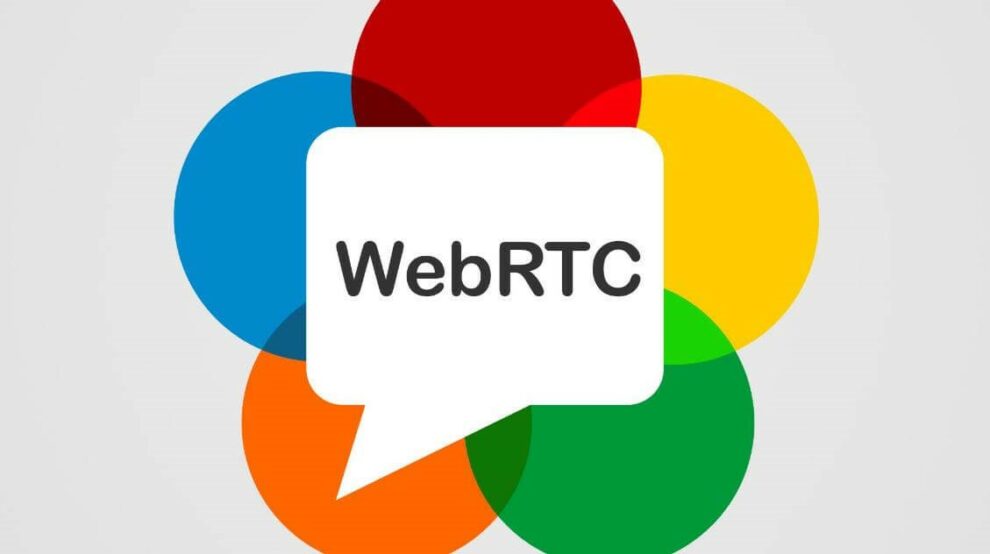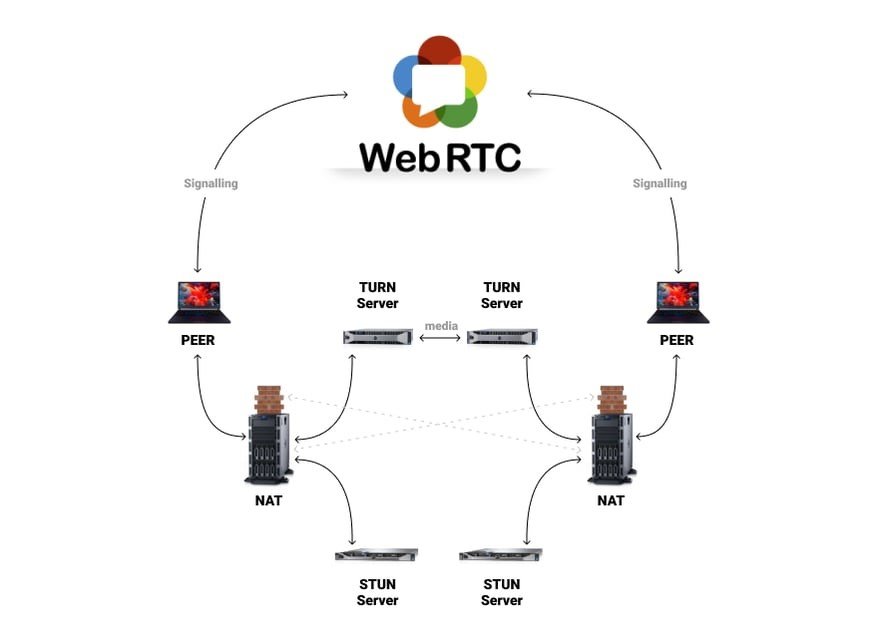An Overview – WebRTC
WebRTC (Web Real-Time Communication) is an API protocol for streaming audio and video. It enables safe peer-to-peer data transfer between two programs or browsers. Since no new plugins or server infrastructure are needed, the technique itself is simple to implement.
SDP packages including caller and connection information (video, audio, file sharing) are transferred via WebRTC. The protocol establishes the call and checks the status of the network connection when using STUN/TURN or signaling servers. Allow your business to experience ideal WebRTC development services with more simplicity and streamlined tasks.
WebRTC is Ideal for…
Users using RTC solutions can proficiently respond to a wide range of use cases. Here are a few instances:
- Industrial Maintenance
Over the past few years, WebRTC technology has contributed to the introduction of video-assistance and video-expertise in the industrial services industry. On-site technicians might run into a wide range of issues and aren’t equipped to handle every circumstance. They can consult experts remotely via WebRTC, even when thousands of kilometers separate them, using a tablet, smartphone, or hands-free mode.
- Customer Relations
In customer relations, sales, and customer support, webRTC video calling solutions enhance the client experience during the test periods.
WebRTC facilitates video communication during the sale, allowing for easy customer advice via a web portal. Direct video calls can be started by customers from a business’ website. Scheduling remote distinct shopping appointments is another option. In this instance, sending the customer an invitation via email or SMS including a connection link suffices. To initiate the call, simply click the link.
By reducing the number of technician trips, WebRTC facilitates remote diagnosis and problem-solving guidance for customers during customer support calls.
- Insurance
WebRTC technology is specifically utilized in the insurance industry for distant claims management. Loss adjusters can handle minor claims over the video call without the need to travel. By using this, insurance companies can lower the cost of adjusters’ travel expenses and promptly reimburse their clients.
- Enterprise Collaboration
WebRTC has opened up new possibilities for group cooperation. Users don’t need to install anything to participate in real-time video and audio conferencing through browsers thanks to WebRTC. By streamlining integration, cutting costs, and guaranteeing browser interoperability, this technology democratizes video calls for team association without compromising corporate security regulations.
- Telemedicine
In recent years, the market for telemedicine and teleconsultation services has expanded rapidly. The teleconsulting solution’s ability to quickly connect doctors and patients is one of its most important features. When using technology that necessitates the downloading of an application or software, this isn’t always feasible. Users can quickly and simply place a call using WebRTC. Patients and physicians can instantly connect by responding to an invitation or by clicking on a link. However, in order to protect sensitive personal data from security lapses, these users need to adhere to strict security guidelines. The solution to these key problems is WebRTC.
Video Conferencing and Web Real-Time Communications Market
- Customized Solutions
Users can add video support to any web project using a variety of JavaScript cloud APIs and libraries that support WebRTC. In the past, real-time data transfer necessitated sophisticated programming abilities and extra licensing, raising costs. WebRTC is now commonly used to host webinars, video-enabled contact centers, and other events.
- A Rise in Video Conferencing Endpoints
Significant changes have been made to the video call market by WebRTC technology. Since the first WebRTC-enabled browsers were released in 2013, there is a potential 1 billion more video conferencing endpoints on the planet. Precisely, every browser is now a basic video conferencing endpoint.
- Technology’s Popularity
WebRTC is currently the second most widely used video protocol, following Zoom’s proprietary one. WebRTC surpasses all other proprietary (Cisco Webex and Microsoft Teams) and standard (SIP and H.323) protocols in terms of speed.
- WebRTC vs Flash
Flash, which was already having difficulties, was killed off by WebRTC and HTML5. Flash is officially no longer supported by the top browsers as of 2017, which has caused the technology to completely disappear from the market.
Is WebRTC really the Need?
YES, it is the NEED! The majority of people use WebRTC-supported browsers. WebRTC also functions without the need for browser extensions or plugins. When it comes to the end user, WebRTC is simply click-to-play. It’s the most simple user experience imaginable.
Additionally, WebRTC has a simpler backend. If users like, they can examine the C++ source code. However, users can also just shorten development cycles and simplify production by using the JavaScript APIs.
All of that results in more software that is adopted since satisfied users are more likely to use their product. The development team will also live better and produce better software if development is made easier. The expense of providing softphone clients, or worse, physical desk phones, for the staff members may be making businesses queasy if they are developing communications for them (in any setting like offices, malls, and more). WebRTC is the answer.
Wrap Up
WebRTC is the best option if users are developing any kind of real-time communication system. Nothing else can perform the functions that WebRTC can, and it is easy for developers and end users to use. Since WebRTC is inherently reliable, users can base their solution on a reliable network and obtain SIP trunking that is equally user-friendly and straightforward as WebRTC.














